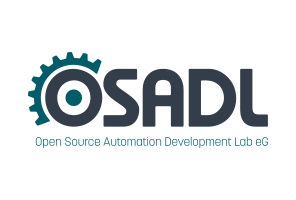Dates and Events:
|
OSADL Articles:
2023-11-12 12:00
Open Source License Obligations Checklists even better nowImport the checklists to other tools, create context diffs and merged lists
2022-07-11 12:00
Call for participation in phase #4 of Open Source OPC UA open62541 support projectLetter of Intent fulfills wish list from recent survey
2022-01-13 12:00
Phase #3 of OSADL project on OPC UA PubSub over TSN successfully completedAnother important milestone on the way to interoperable Open Source real-time Ethernet has been reached
2021-02-09 12:00
Open Source OPC UA PubSub over TSN project phase #3 launchedLetter of Intent with call for participation is now available |
Real Time Linux Workshops
1999 - 2000 - 2001 - 2002 - 2003 - 2004 - 2005 - 2006 - 2007 - 2008 - 2009 - 2010 - 2011 - 2012 - 2013 - 2014 - 2015
14th Real Time Linux Workshop, October 18 to 20, 2012 at the Department of Computer Science, University of North Carolina at Chapel Hill
Announcement - Call for papers (ASCII) - Hotels - Directions - Agenda - Paper Abstracts - Presentations - Registration - Abstract Submission - Sponsors - Gallery
Challenges in Virtualizing Real-Time Systems Using KVM/QEMU Solution
Manikandan Ramachandran, Infosys Technologies Limited
Real-time systems used in media space have to be highly reliable. Historically, product manufacturers provide high reliability solution by providing backup device that covers a primary device. The issue with this solution is that the end customers are forced to invest heavily on both installation and maintenance of backup devices that essentially doesn’t provide quantifiable value to their service. With the advent of hardware-assisted virtualization, and proprietary and open source hypervisor solution, many embedded communication devices started providing high availability solution on a single physical device. This concept saved precious resource for the end customers. KVM/QEMU is one such para-virtualization solution that exploits hardware virtualization feature.
Over past few years KVM/QEMU Virtualization solution is growing at a fast rate in enterprise server industry; however, on embedded space the penetration is low. This paper looks at various challenges an embedded architect would face in adapting KVM/QEMU solution.
The paper starts by providing various reasons for embedded system architects to look for virtualization solution. Then it lists how KVM/QEMU solution can address architects’ requirement. Further the paper provides a detailed description about various modules that are involved in KVM/QEMU virtualization solution and gives a brief overview about the interaction among these modules. The paper concludes by providing various efforts that were made to implement a high availability concept using KVM/QEMU virtualization solution.




